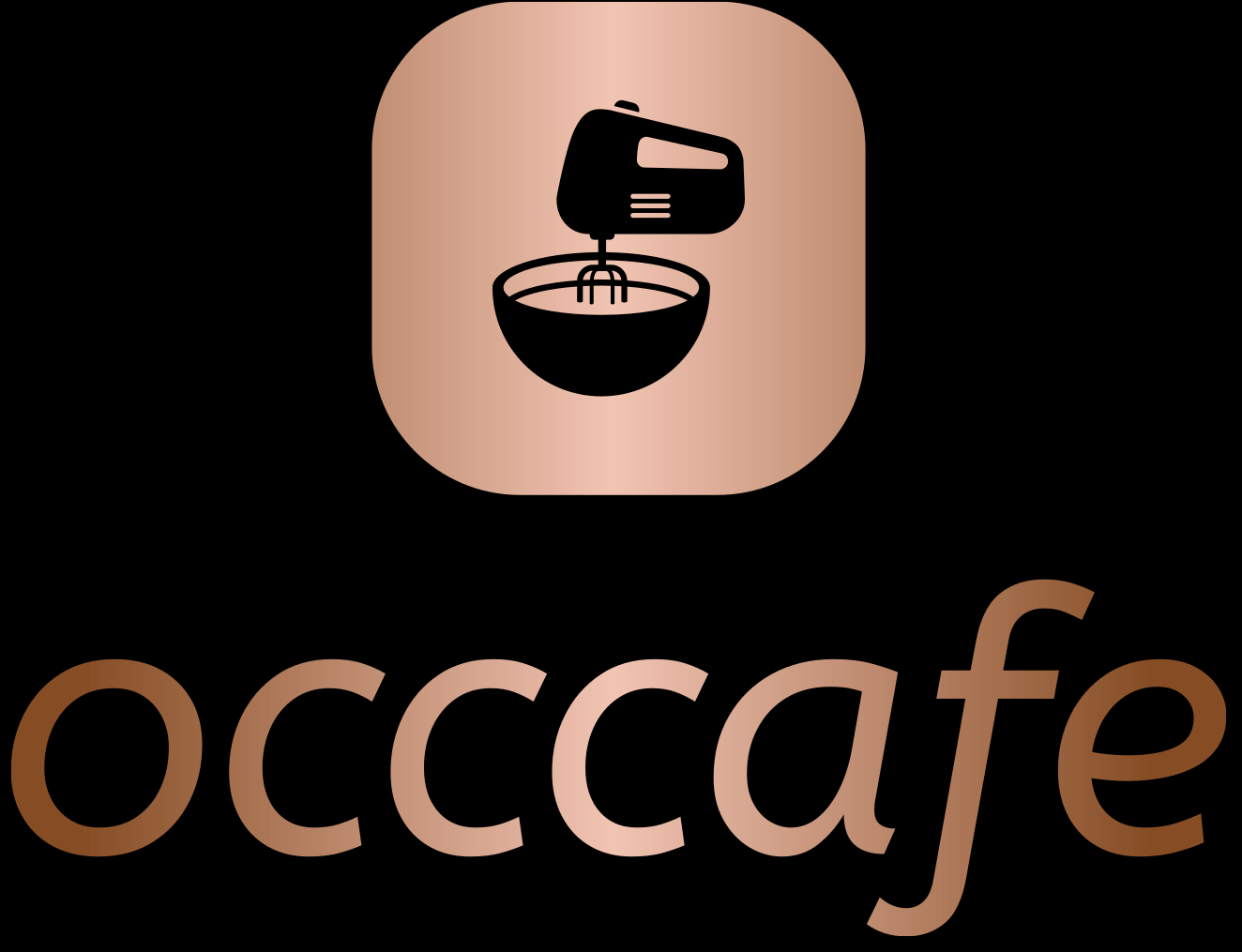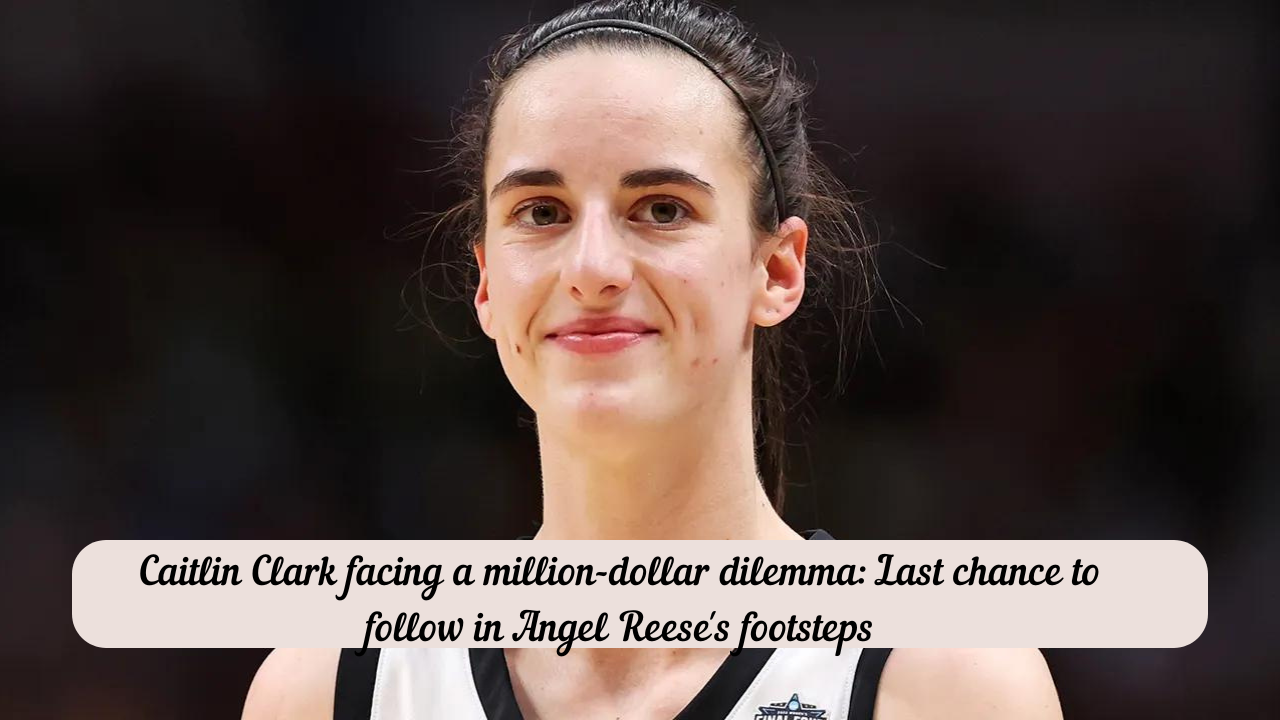Introduction
At a pivotal junctural in her athletic career, Caitlin Clark stands. The Indiana Fever star has an unusual option between two professional routes: golf and basketball. Both the Unrivalled League and LPGA have taken notice of her extraordinary abilities, which create a million-dollar conundrum that might decide her destiny.
Clark’s path to here has been really remarkable. Her impressive performance in the basketball courts made her a promising basketball star; however, she has to decide about her choosing between a conventional basketball career and a professional golfing career that carries implications of colossal financial importance.
This is far more than a financial decision. Clark’s choice will take her to map out her way into her legacy in the world of sports from here on out. If she chooses basketball, she would have the chance to share the court with and play against some of the planet’s best players and, perhaps, earn a very lucrative contract. With golf, she gets another kind of challenge in a sport in which she demonstrated so much aptitude already.
Current Career Landscape of Caitlin Clark
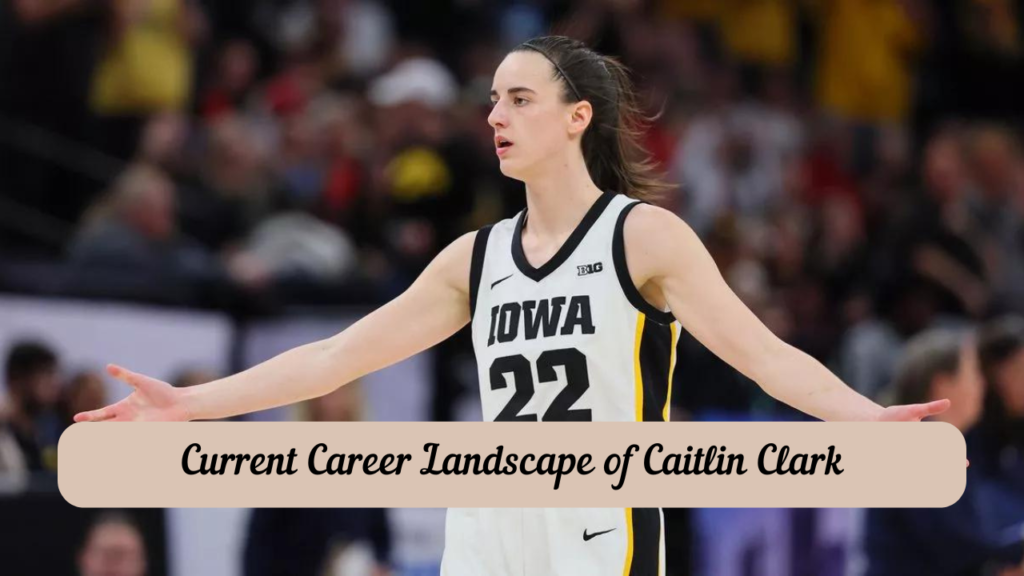
The Indiana Fever position of Caitlin Clark reflects only one aspect of her growing professional possibilities. The Fever chose Clark as their premier player because of her remarkable scoring power and court vision, which distinguished her in collegiate basketball.
For an athlete at Clark’s career level especially, a $1 million contract marks a turning point in women’s sports. This statistic highlights the evolving scene of professional women’s athletics and either meets or surpasses many of the wages of many WNBA veterans. The financial package, however, indicates a paradigm shift in how professional sports value female athletes from a financial standpoint, other than financially.
Beyond the salary level of individual income, this agreement might be precedent-setting in future discussions toward women’s athletics. For another generation of female athletes in track and field and other similar sports, Clark’s decision could influence her negotiation of a salary and contract scale.
Why Is Professional Basketball So Popular? For Clark, the best place where talented women’s basketball players can prove their skills against the world’s best players would be the WNBA. Entering into the league which has a very high level of competition and excellent performance, an athlete is predicted to be first pick in the 2024 WNBA draft.
Salary Structure: The Rookies’ Challenges and Prospectives
This pay system the league has proposed presents either opportunities or threats for the new signees. Ideally, a newcomer should set aside between $65,000 and $75,000 as a form of recompense from the baseline pay; awards for fine performances and appearance in any All-Star may increase a player’s gains. Secondly, Clark, with significant financial rewards associated with greater benefits, will likely get the WNBA Rookie Player of the year award by 2024.
Beyond Base Pay: Extra Benefits for WNBA Athletes
Apart from their regular pay, WNBA players have access to several sources of money:
- Marketing deals on well-known brands.
- Off-season overseas playing opportunities; revenue share from league sponsorships
- Using social media channels for monetisation
- Sales of personal goods
- Increasing Access to Growing Opportunity
The growing audience and media coverage of the WNBA present athletes with excellent chances for exposure. For players like Clark who have a sizable social media following, this is extremely helpful since they can leverage their platform to create extra money. Greater game visibility resulting from recent alliances between the league and big networks/streaming platforms could present more sponsorship possibilities for elite players.
The Competitive Character of the League
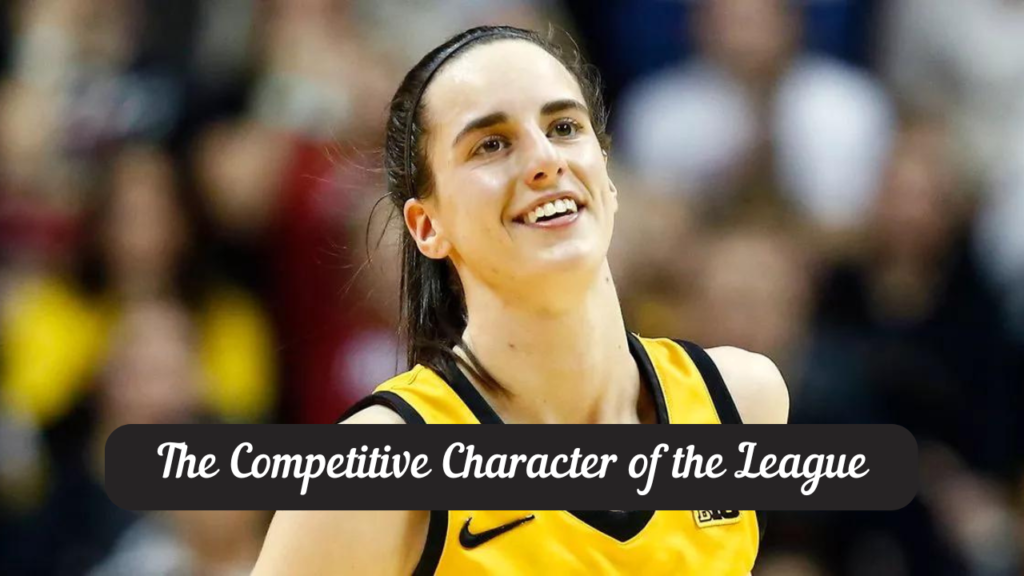
The fierce rivalry in the league enables Clark to often challenge seasoned players. This helps her not only get better as a player but also helps her establish her professionalism. Based on several studies on athlete performance and professional development, such events are priceless and can drastically affect a player’s career path[1].
Investigating Professional Golf’s Possibilities
With her entry in the esteemed Pro-Am competition at Pelican Golf Club, Caitlin Clark’s golf career takes front stage. Her inherent agility fits the golf course, where she has shown amazing ability throughout practice.
Named for golf legend Annika Sorenstam, the event marks a turning point in Clark’s career search. Beyond her 72 LPGA successes, Sorenstam has changed what is feasible for women in professional golf. Her success narrative, which highlights the rich prospects in the sport, provides a road map for competitors like Clark.
Monetary Benefits of Expert Golf
Professional golf presents different financial benefits:Top LPGA players can make $2–3 million a year only from tournament winnings.
- Golf’s individual character lets many brand alliances possible.
- Professional golfers usually play good into their fortys.
- International events give global market access.
Prize money from the LPGA Tour has increased dramatically; major tournaments now give prizes of almost $5 million. This financial terrain offers a convincing substitute for conventional basketball contracts.
Control and Versatility in Golf
The adaptability of golf also lets players keep control over their brand development and calendar. Professional golfers can choose their events and create personal sponsorship portfolios free from team limitations unlike in team sports. Moreover, the changing course configurations of the LPGA Tour have made it more accessible and fitting for female golfers, therefore increasing the possibilities in this game.
Analogies with Angel Reese’s Path
The way Angel Reese negotiates professional sports provides insightful analysis of Clark’s present conundrum. Known for explosive basketball presence, Reese carved out a niche career combining personal branding with physical ability.
Major Professional Highlights:
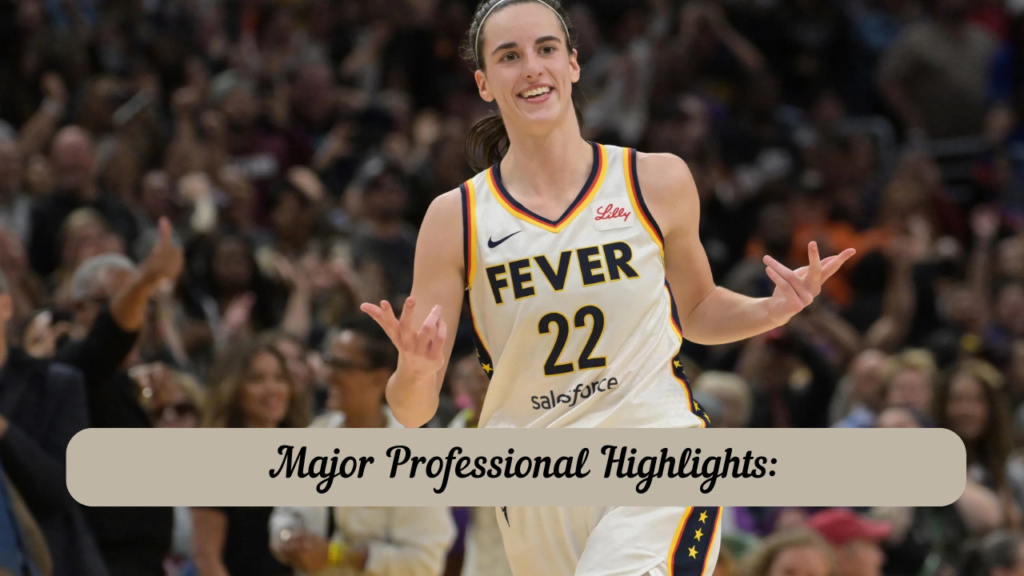
- She found notable NIL deals worth $1.7 million.
- Boast a social media following of 2.7 million.
She signed with the Chicago Sky in the WNBA Draft 2024. Her success is credited to being able to have diversified income streams but not making basketball her number one priority, as Clark had this dual-sport thinking whereby she prioritized being a basketball icon first and modeling and corporate deals second.
Their attitude to career development sets the clear distinction. Where Reese developed her brand inside the basketball system, Clark muses over a total sport change. Though their routes differ in basic terms, both athletes have the ability to transform women’s sports marketing. Reese’s blueprint offers Clark a tested alternative to think about since it shows how sportsmen may maximise profits without leaving their main sport.
Impact on Future Salary and Career
Professional basketball and golf offer different routes to professional development in the financial landscape. While veterans may be paid as much as $234,936, the WNBA pays based on a fixed structure and rookie players may be capped at $76,535.With estimations ranging from $500,000 to $3 million yearly, endorsement deals in basketball might perhaps greatly increase Clark’s revenue.
The earning potential of golf operates according another pattern. With elite golfers earning $2-4 million yearly, LPGA Tour players mostly make money from event winnings. The individual nature of the sport lets one schedule more freely and establish personally brand.
Potential Basketball Revenue Sources:
- Base pay covered by team agreements
- Bonus performance points
- Team merchandising sales
- national broadcasting appearances
- Social media alliances
Television commentary functions
These sports have somewhat different risk-reward ratios. There are fixed contracts in basketball; however, pay caps make it impossible to go too high. Golf can provide more opportunities to make lots of money, but constant performances in tournaments ensure economic stability.
Market sponsorship opportunities have much to do with how competitive the market is for the sport.Golf may be more of an individual sport, allowing for unusual brand partnerships, but basketball allows for shared marketing areas within a team approach. And because of her strong media profile and proven ability to attract crowds, Clark will be very marketable for any sport.
Long-term wages and financial security will probably be much transformed based on which of the two sports she chooses to continue with. While basketball may surely provide a more stable inflow of money, nothing can be ignored about one’s potential earnings in the game of golf.
Moreover, the chances for personal branding and flexibility that accompany a job in golf could be rather important in determining her general career path.
Caitlin Clark’s Offseason Plans and Activities
The summer plans of Caitlin Clark expose the difficulties of juggling dual-sport goals. Her regular schedule comprises:
Two to three hours of basketball instruction in morning sessions, with an eye towards conditioning and shooting drills.
Afternoon Practice: Local course golf lessons help her to improve her swing technique.
Recovery Time: Specific physical therapy and injury prevention activities
The Indiana Fever has given Clark particular training allowances to fit her golf activities. She divides her practicing hours among:
- Private basketball workouts under personal trainers’ direction
- Lessons on golf from PGA experts
- Programs for strength and fitness geared for both sports
While keeping her training program, Clark’s present calendar consists in media appearances and involvement in commercial activities. Her management team has created a strategic schedule letting her:
- Take part in sponsored events.
- Both sports should be practiced efficiently.
- Meet contractual commitments.
- Stay in optimal physical shape.
This full calendar shows Clark’s dedication to investigating all professional options while keeping ready for urgent basketball duties.
Celebrities’ Influence on Sporting Choices
Athletes’ actions are greatly influenced by celebrity sponsorships, therefore influencing the whole sports business. Well-known personalities like Blake Lively and Katie Holmes demonstrate how strong celebrities can be in impacting sports-related decisions and creating trends that appeal to both sportsmen and supporters.
Athletes’ Problem:
Athletes are under continual public scrutiny while making significant career decisions. The manner Caitlin Clark makes decisions shows the challenges experienced by publically visible celebrities:
Social influence through media: Every thing is rated and discussed via the social network.
Brand alignment: Cooperation has to fit personal ideals and professional goals.
Public Viewpoints: Pressure to stay faithful to your goals and yet satisfying fan expectations
Conclusion:
The million-dollar conundrum Caitlin Clark finds reflects a turning point in her athletic career. Her choice between professional basketball and golf will determine not only her immediate career but also her influence on women’s sports over long run. The triumphs of sportsmen such as Angel Reese show the possibility for forging a different career route in professional sports.
The crux in Clark’s decision lies in balancing her true passion for the sport with the financial potential. It will prepare her for success in either case, with talent and marketability, no matter whether she moves ahead on the WNBA accepted route or professional golf. Clark’s decision would serve as a roadmap for new sportsmen facing such similar career-defining decisions showing that conventional career paths alone do not lead to sustaining a sports legacy.
